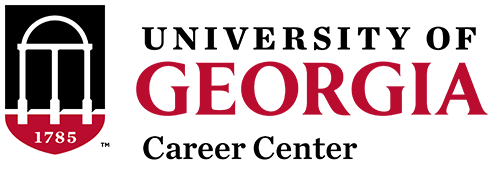This blog post has been updated by Kristina Rust, Career Consultant on March 1, 2024.
As a student, you’ve probably heard of LinkedIn before, and you know that the platform is an important tool for professional networking. But did you know that LinkedIn can also be a crucial resource for performing career research?
Many times when I present to classes about LinkedIn, I discuss how it is similar to other social media platforms in a number of ways. You can connect with colleagues on LinkedIn, use the platform to stay in touch, and utilize its newsfeed by liking and sharing posts and pictures – just like Facebook or Instagram. But unlike other platforms, there are a number of ways you can use the powerful data in LinkedIn to learn more about your career interests.
Here are just a few tips you can consider for taking your LinkedIn use beyond simple networking:
Find Alumni
One of the coolest tools that students are often unaware of is that they can find alumni on LinkedIn. This feature, found under the the University of Georgia page's “Alumni” tab, allows you to do a simple point-and-click search to look up UGA alumni related to your interests. For example, if you are interested in moving to San Francisco, you can filter by "Where they live," and the tool will filter out only the alumni who work there. There are also filters for things like company name, job function, or college major.
With over 130,000 UGA alumni on LinkedIn, this tool provides a dramatic way for you to discover people who are relevant to your career goals. Not only that, but this, too, can be used for career research. Want to know how UGA grads are using their psychology degree? Filter the results to find out. Want to know if it’s possible to get a job in South America with an English degree from UGA? Apply the appropriate filters, and you can see if there are alumni who have done exactly that!
Advanced Search
Another great way to harness the power of LinkedIn is by playing around with the Advanced Search function. There are a few ways this could work:
- Exploring a Career Field. So you want to be a Chief Marketing Officer someday, but you don’t know where to start? If you have a job title in mind, type it into the search bar, and click on "People." From there, you can browse the profiles of folks who have (or had) that title. This process is called “backwards career pathing” – you can look at the experiences that other professionals completed en route to your dream position. The same process can help you learn about how to work toward the goal of employment with a specific company, such as Nike, Apple, or Google.
- Preparing for an Interview. Perhaps you have an important meeting scheduled with an employer, and you want to do some research to impress your new connection. LinkedIn often has some unique information to contribute. For example, if you have applied for a job or internship and want to better understand the responsibilities of that position, perform a search for the company and position title. You can see how other candidates describe their experience in that role, as well as where they worked before and after. You can also search directly for the names of the people you are interviewing with in order to learn more about their experience at the company and develop some good interview questions. Remember that LinkedIn is a public platform, so you’re preparing yourself effectively by looking at profiles in a professional way.
- Building Your Profile. Lastly, you can perform some specialized searches to find candidates (or students) who match your interests and you can use their profiles as a way to help you brand yourself more effectively. Look at the way that others have described their experience, summarized their interest, or supplemented their profiles through things like digital media (examples of their work). You don’t have to reinvent the wheel as you figure out how to navigate LinkedIn – take cues from others who are already doing it well.
Company Info
Finally, remember there is also a great deal of company info you can harness on LinkedIn. Some companies have detailed pages to help candidates learn more about their organization and connect with recruiters. Others will simply offer a basic description. However, you can take advantage of this data to develop a target list of employers.
I once used this strategy to help a student who wanted to relocate to the west coast and work for a marketing agency. Since we did not have a list of the many small and medium-sized agencies in his target city, we used LinkedIn as a way to jumpstart the search. From there, he could do a Google search on the organizations on the list to see if they were hiring. The Advanced Search function for companies allows you to filter by features such as industry, location, and company size, allowing for a significant degree of customization in this research process.
Hopefully, these tips will help you begin to think of the many ways that you can use LinkedIn beyond basic networking. Happy sleuthing!
